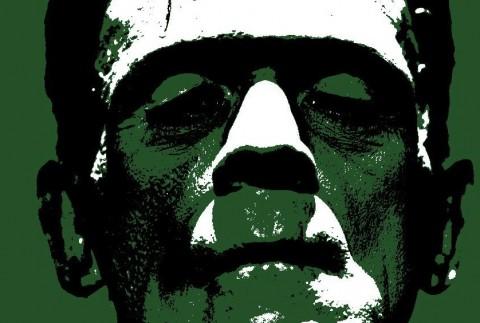
Misunderstanding is rampant, ignorance is the real pandemic, and misjudgments are commonplace, so much so, we rarely even take the time to pay attention and notice them. Plus, there is no solution that I can see on the horizon. Even if we were all educated and “learned”, we would still disagree, I’m sure of it, only maybe then it would be on worthwhile subjects we understand and not on convenient scapegoats that we have no clue what they mean, or who or what they represent. Since we were kids, we’ve been told that Washington never told a lie, that Columbus discovered America and Frankenstein was a monster.
Why were we told those things? is hard to imagine. Actually, we were taught them, in a school setting, when the reality is different and so much more interesting.
Link to DRC: From Columbus to Frankenstein.
Or if you prefer no ads, here is the PDF:
From Columbus to Frankenstein.
When I read that a number of activist had toppled the statue of Christopher Columbus in Baltimore, I wondered if those enlightened activist had any idea who Columbus really was. We all learned that he discovered America in 1492, but surely, I thought to myself, that in itself was not a crime. On top of that, his discovery was a fluke, if not arguably a total failure, since he was really looking for a western route to India, China, Japan and the Spice Islands. So maybe the statue was toppled for what he represented. In other words, the European exploration, exploitation, and colonization of the Americas.
The fact is that understanding anything well is not easy or effortless, and some things that seem straightforward at first sight, when looked at in depth, are everything but.
I was reminded of this recently when I mentioned to a friend that I wanted to do an interview with Mary Shelly (1797 – 1851), the author of Frankenstein. There were many things I liked about her and many reasons for choosing her. For one, she was a woman who started writing at the age of 18, at a time when most authors were men and women had to publish anonymously (Mary Ann Evans, Emily Brontë) so as to avoid female stereotyping. Mary Shelly, however, used her own name and suffered for it. That said, my friend’s first question was “Are you going to ask her about Prometheus?”
“What?” I wasn’t. I was going to ask her how she felt when people started calling the monstrosity Frankenstein, when in reality that was the name of the creator, Victor Frankenstein. In the book, the monster has no name. But it’s not as simple as that. Reading the book carefully and doing the research for a credible interview, I found that the real monster is actually the mad doctor himself, who suffers from a mental condition best described as paranoid schizophrenia and made what is now being called the “Creature.” And the Creature is not a machine or a robot, but actually a new being, with emotions, dreams, and desires that cannot be satisfied by humans, who are sickened by his appearance and scared of his brute strength.
Of course, the book is highly entertaining and the more so because the creature is made up of dismembered human corpses that eventually compel doctor Frankenstein to regret meddling with nature ‒ after he realizes that his new creation is seeking revenge against him and his family.
And that’s just the tip of the iceberg. There are so many plots and subplots, twists and turns in this apparently simple story that I can genuinely call it a true labyrinth. An example of a subplot is the ongoing internal conflict suffered by Victor himself, who professes to be a Christian, and cannot help but feel that by giving dead flesh life, he has also betrayed his faith and commandeered the rights of his Creator.
“The Modern Prometheus”, by the way, is the subtitle of the book and refers to a Titan in Greek mythology who is credited with the creation of humanity from clay, and who being a champion of his creation, also defies the gods by stealing fire and giving it to humanity, so they can start their civilization.
Still, Mary Shelly’s story doesn’t stop there and a year could easily be spent going into all the symbolism and imagery of the story, not to mention the consequences.
So, back to Columbus. Does anybody really think that a cavalier understanding of a complex man and his times is enough to condemn him to the rubbish pile of history? I’m not saying that a simple understanding is invalid or incorrect, I’m only saying that a cursory glance at a complicated subject probably does not provide enough information to judge and condemn a man who lived 500 years ago. I am also highly suspicious of the motives of people who topple anything. In fact, I see the toppling of the Cristopher Columbus statue as simple mob rule, a type of mental condition where herd mentality provides the energy and people adopt certain behavior largely on an emotional basis rather than as a product of rational thought.
Herd mentality, however, seems to be the new fashion, and it will be interesting to see what develops. m
|
|


4 thoughts on “Guest essay. From Columbus to Frankenstein. Denton Record chronicle, 7-10-20”
Good info. Lucky me I found your website by accident (stumbleupon).
I’ve book marked it for later!
🙂
My family members every time say that I am wasting my time here
at net, except I know I am getting experience all the
time by reading such good articles.
I’ll immediately grab your rsss eed as I can not in fiding your emal subscription link or e-newsletter service.
Do you’ve any? Please let mee know in order that I could subscribe.
Thanks.
шерстяные ковры webpage дорожки ковровые
Comments are closed.